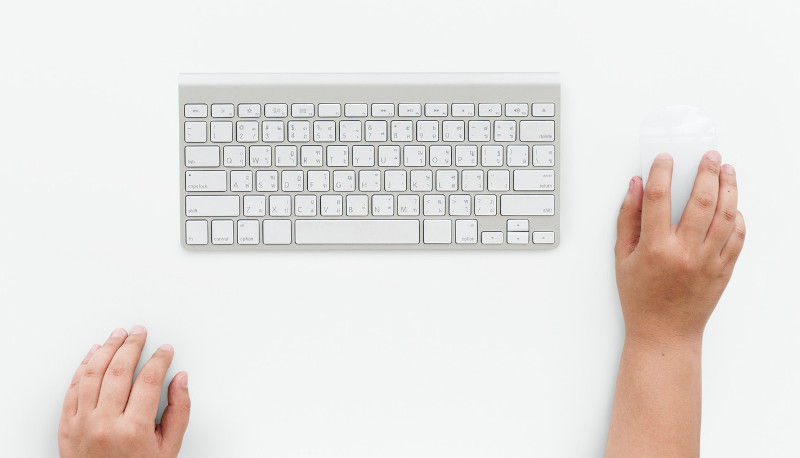insert_linkWhat is Cross-Dominance and Why Should You Care?
Cross-dominance is the fascinating phenomenon where one favours using each hand for separate tasks. To clarify, this is unlike having a single, dominant hand which is preferred for most tasks.
For example, a person with cross-dominance might favour writing with their right hand but rather brush their teeth with their left.

Also, make that extra effort not to confuse cross-dominance with ambidexterity—for that is something completely different. Well, perhaps not exactly completely different.
Ambidexterity is the ability—natural or acquired—to use both sides of your body equally for all tasks at hand. That task doesn’t have to be at any particular hand, as ambidextrous people don’t have a dominant hand for anything.
If you’re one of the few who
Who doesn’t want to be shaking Elon Musk’s hand whilst writing all about how he’s taking us to other worlds?
Truly inspirational: Future of the Space Industry: Why Should You Be Excited?
Sounds exceedingly convenient, don’t you think?
Nevertheless, we are here to talk about cross-dominance, not ambidexterity—that’s for another day, you see. Let me engage you with this simple, straightforward question, to begin with:
Do you often find yourself inconvenienced when your non-dominant hand would be better suited for the current situation?
If your answer is “yes” to this question, I suspect you are likely to be left-handed. (That doesn’t mean right-handed people cannot find themselves in the scenario described above, however.) In this case, you should by now be already convinced of why you should be cross-dominant.
After all, if certain tasks are better suited for your non-dominant hand, why not simply use it?
insert_link1. Perhaps the Biggest Reason Cross-Dominance Would be Useful

As a matter of fact, there is a very worthwhile reason why I am here writing this article for you today. Moreover, this reason is that some people are left-handed.
But do not be fooled; the reason is that only approximately 10% of the population is left-handed—as opposed to people simply being left-handed.
As a consequence, the majority of our world we live in today is crafted with right-handers primarily in mind. Cameras would be just one example
You must accept the world as it is, as long as you don’t want to pull together the effort to change it.
(By the way, do not attempt to alter the population structure, for that went wrong many times in the past.)
insert_linkSurely, the World Still Embraces Left-Handedness
Indeed, many things in life are ambidextrous (your dominant hand doesn’t affect how well you can use something). Things such as golf clubs come in left-handed variants, too.
In addition, right-handed equipment can sometimes be used with the left hand with minimal problems. Otherwise, you could withdraw your soul from yourself and use your non-dominant hand in various situations.
So why do I need to know about cross-dominance?
This is a vastly well-reasoned question.
Thus, as a response to the aforementioned question, being cross-dominant is, in my opinion, a useful life-hack. That is, a life-hack which will allow you to unlock your full potential and maybe even be more productive. It is sure to make your life easier in the long-term, provided you use it in a strategic manner.
Yes, that is remarkably nice, indeed, so how would one go about implementing cross-dominance into one’s life?
insert_link2. Train Your Non-Dominant Hand
There is, of course, no access to the benefits of cross-dominance if you’re stuck on the boring plane of existence; if you aren’t truly capable of using your opposite hand like a dominant one, in other words.
However, unlike becoming completely ambidextrous, you train your non-dominant hand selectively. This entails only training it for tasks of your choosing, and those tasks would probably be the other-handed ones.
Therefore, you aren’t wasting your time training your hand on things when there is no benefit.
Stop wasting time: How to Be Productive with This Powerful Tool—Guaranteed

Writing, for instance, might be done perfectly with your primary hand. Although, this may not be the case when it comes down to using scissors (most of which are right-handed). Training your non-dominant hand to use scissors is evidently the direction to push in.
In a way, you could say that this isn’t technically cross-dominance because your primary hand remains equally capable: it is like being ambidextrous but exclusively for certain activities.
On the other hand (laugh out loud), you’re not able to perform that activity equally as well with your dominant hand. This, of course,
So, yes, I will class this as cross-dominance!
insert_linkThe Key to Making This Work Flawlessly
When I say train your hand, I mean train it intensely. I also don’t take don’t knows for an answer, I demand the real deal.
Likewise, you should demand the real deal.
If you ever want to become cross-dominant, training shouldn’t be taken lightly, as frequency is key.
Say that, for instance, you want to train handing scissors with your non-dominant hand. You, however, rarely use them, and it’s always for cutting out illustrations of butter.
“Never mind, I’ll just use my non-dominant hand when I do my occasional cutting-sessions. I will eventually be able to use scissors proficiently…”
That is so very, very wrong—unfortunately.
The case outlined above requires you to cut for the sole purpose of using scissors. (With your secondary hand, obviously). Perhaps try cutting out neat, minuscule squares (3µm²) from an A4 sheet of paper each day until you get good.
Otherwise, you may not achieve your goal of cross-dominance. You fall
Similarly, if your activity is writing, dedicate some time out of each day specifically for that. For using cameras single-handedly like you were born for it, take some needless daily pics, yo.
No matter what you do, ensure you dedicate an overabundance of time to train that activity.
Remember that the more frequently you train, the more progress you make, too.
insert_link3. Train Beyond What You Do in Practice

Another useful, yet quick, idea. Always prepare for the worst.
Or, in this case, train your cross-dominance beyond what you expect to use it for. If pilots and the like train for the worst possible scenario, why shouldn’t you?
This could be a fantastic way of boosting your progress when becoming cross-dominant.
Think of it like visualising and (hopefully) achieving goals: one option is to strive for a standard, “realistic” goal—or what you intend to use cross-dominance for. Alternatively, one could opt to think big, thus setting gargantuan goals (like Elon
The latter of the two resembles you training beyond how you expect to use cross-dominance. It is vastly more successful besides.
For example, one way of employing this strategy is to train your hand for an additional activity. Equally, though, you could just as easily bring your desired task to the next level; learning to draw, as well as write, with your non-dominant hand, is one example of this.
Break free of your limitations: 9 Self Control and Discipline Strategies
insert_link4. Cementing the Skill
You have now become the world expert at cutting out butter with your non-dominant hand, great! So, now that you’ve accomplished your goal, are we done yet? Well, in truth, not really.
I find that, subsequent to several weeks of no writing, I am unable to produce legible handwriting for a while. Give it some time, though, and everything is back to normal.
With that in mind, you may find it wise to keep your newfound skill sharp in the shed by practising it regularly. Additionally, after a while, as you cement the skill further, there might not be a need to train as frequently—if at all.
It all depends on what you are doing, and how frequently. There is hence no defined solution for everybody: it’s a massive bag of peculiarly-shaped penguins, so take your pick.
insert_link5. My Tip: Use Computer Mice with Your Right Hand
Let us not forget, this is a computer-proficiency blog and there is a real reason why I am here today. If truth be told, my quill is itching above this piece of parchment, waiting to get to this part.
Once I’m done, I’ll upload my parchment to the Internet via first-class mail. This is only to have someone subsequently fax it back to me. Then, achieving absolutely nothing, I’ll scan the received document with my barcode scanner.
Resentfully, I will proceed to send the barcode scanner manufacturer a telegram complaining about poor customer service. Preceding insulting myself for forgetting I have a fully functional computer, I’ll visit the local Internet café to publish this blog.
I can predict the future.

Returning to the topic of this blog, do you use computer mice with your left hand?
If so, my argument is that you will benefit hugely by employing the cross-dominance techniques discussed earlier. That is
insert_linkIt Was Simply How It Was Meant to Be
Like cameras, scissors, and golf clubs, mice (and keyboards) are also subject to the bias of the hand. It is lucid to me that, once again, the popular right-hand is the favoured hand.
This is not me pulling out one of my nonsensical opinions from my nonsensical opinion box, however; there is some unarguable evidence why a right-handed user will be able to achieve a greater level of productivity.
Therefore, I recommend that people with a dominant left-hand embrace cross-dominance, thus increasing their computer proficiency. But how does this work precisely? Yes, legitimate question, remarkable question…
insert_linkIt’s in The Mouse
Firstly, let us inspect the intricacies of the computer mouse.
Most mice you find (in real life) are ambidextrous—making everybody happy. Having said that, the left-click button is the default primary click in most operating systems. (I say “most” because there is probably some crazy Linux distro with right-click as the default).
This is so because it means the primary click is activated by the index finger of the right hand. Swap hands, though, and then the index finger rests upon the right mouse button.
Fortunately, it doesn’t take substantial effort to change the default click, normally.
insert_linkDon’t Miss Out on The Best of the Mouse
So, with ambidextrous mice as well as the less common left-handed mice, why is there an issue?

Well, even though ambidextrous mice are common to find, many mice on sale are right-handed. The reason for this is that you can achieve far better ergonomics when optimising for only one hand. (Moreover, most people are right-handed, so they are far more common).
As a consequence, people who would rather use their left hand have a limited range of mice to use. This becomes especially apparent when we move up into the high-end of mice.
Just notice the number of right-handed mice compared to ambidextrous ones in the above link. It isn’t a few—certainly not a few—but, rather, these high-end right-handed mice are immensely bountiful.
Also, take a closer look at how the feature-rich ones (e.g. the ones with copious macro buttons) are mainly right-handed. My mouse, the Logitech G502, is one of these.
insert_linkThere is Only One Good, Viable Solution, Undeniably
What is the solution for a left-handed computer enthusiast demanding a high-end, quality mouse? Is it to defy the convention and use a right-handed mouse with your left hand? Absolutely not!
To be concise, this suboptimal solution promotes discomfort in addition to not being able to fully utilise your mouse easily. For example, macro buttons located where the right-hand thumb is may not be effortlessly accessible by the left hand.
To be clear, that is purely a single example, which already shows where your productivity can take a hit.
By refusing cross-dominance, you cut yourself off from the opportunities offered by right-handed mice.
To exemplify once more, you would cut yourself off from using the best mouse for programming (and power users). In fact, that is what my most recent article is all about.
Now you can: Best Mouse for Programming 2018? You Need to See This!
Why don’t you attempt to be cross-dominant with your computer mouse now, so you can become exceptionally productive later?
insert_linkThe Keyboard is the Enemy Too!
Secondly, let us investigate the intricacies of the keyboard.

This time, though, I am going to ask to notice how most keyboards share a tremendously similar layout. You see that, don’t you?
Caps lock, tab, escape, Windows key etc to the left, and arrows, number pad, home, delete, etc to the right. Why is this so?
It turns out that this design is more convenient for the right-hander, who presumably has their keyboard on the left, and their mouse on the right.
As a result of this layout, a right-handed person has a different ergonomic position than a left-handed person; this would entail having the left hand on the left side of the keyboard. Meanwhile, the right hand—also in alignment with the shoulder—sits comfortably on the mouse.
But why is this beneficial?
For you see, power users, like you or me, make the most out of the keyboard to be productive. That is to say, keyboard shortcuts are heavily used.
Most notably, the copy, paste, cut, undo, save, find, and select all shortcuts are all located towards the left side. Ctrl + C, for instance, is nothing close to a stretch for the left hand alone to trigger.
This type of convenience is paramount for a power user to be productive, as no right-click context menus are required. Furthermore, when dragging files, I find the easy access to the Ctrl and Shift keys largely helpful.
Want even more productivity with shortcuts? How to Navigate Windows 10: 123 Most Valuable Shortcuts
insert_linkFinal Note

To clarify, the purpose of this article is not to eliminate left-handedness; this is seemingly rather frivolous and is definitely not what cross-dominance is all about.
I am, in actuality, trying to encourage you—if you’re left-handed—to make the effort to embrace the predominantly right-handed world. As a result, you will reap the benefits that come with doing so.
On this day in history, it has been clearly established that left-handed computer “power users” are better cross-dominant; cross-dominance is for the wisely productive, not the weakling.
And, with that in mind, don’t forget to be brave and try out the best mouse for programming of 2018.
You will love it, trust me.


